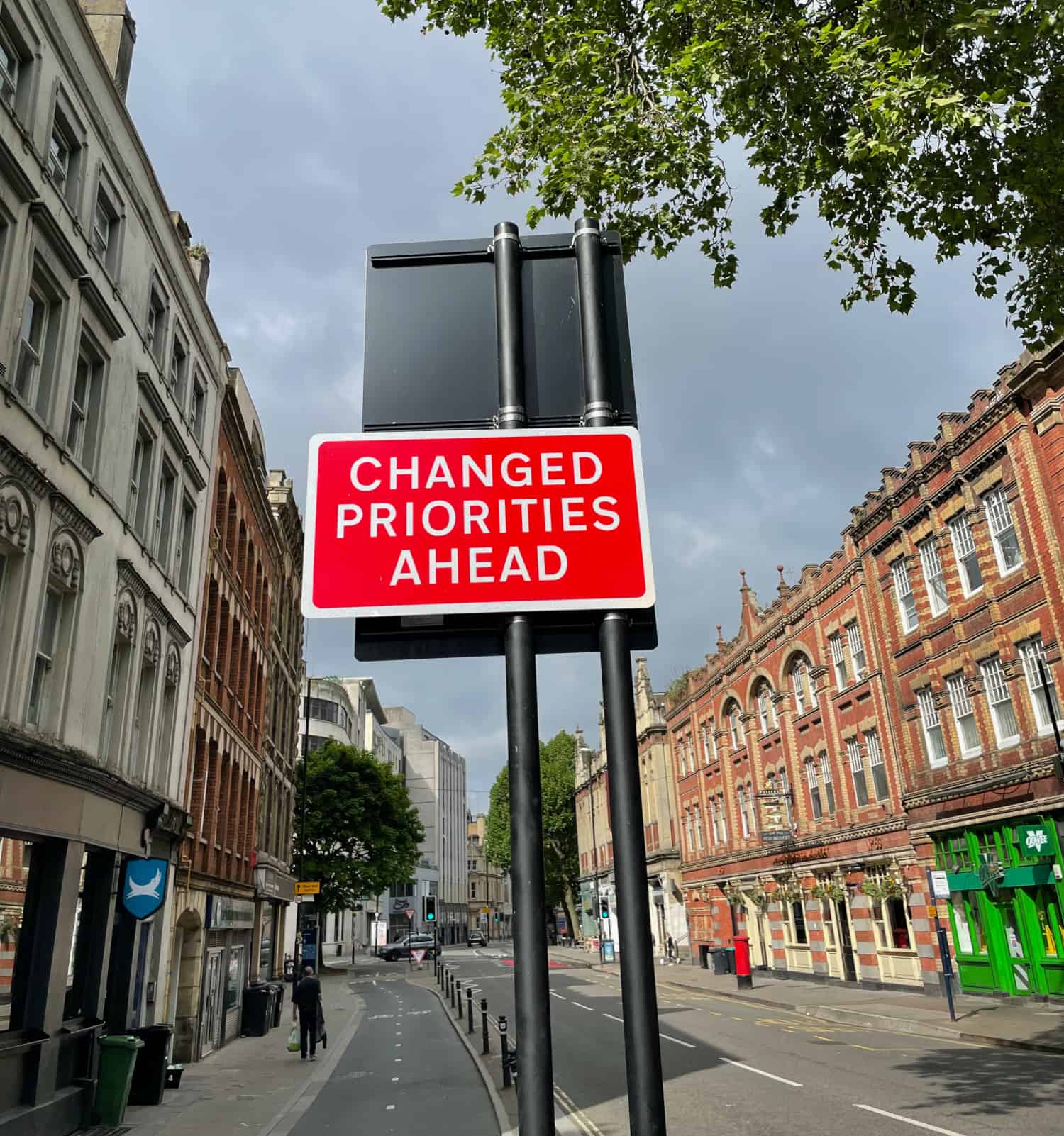How To Set Priorities for 2023
Introduction
The upcoming year, 2023, represents a window, a slot, of time in our lives. So now, mid December 2022, would be a good time to take stock of the current year. It is also an ideal opportunity to look ahead and consider what our priorities should be for 2023.
In this article let’s consider how to set priorities for 2023, proposing some steps, questions and factors that may help in that process.
The article is not about goal setting. Priorities and goals are obviously closely linked but are not the same thing. It may also be useful to look at how priorities and goals differ, and how they might relate to each other. We’ll consider that below.
There is a multitude of ways we could approach setting priorities. The steps suggested below are based on my own experience and thoughts. That being more than six decades of normal life ups and downs through adolescence and adulthood, plus some foreseen, lots of unforeseen, and a healthy dose of things that could be called ‘unknown unknowns’, in the parlance of one Donald Rumsfeld.
Everybody chooses their own set of priorities, so we won’t presume to prescribe what those should be for anyone. This article is just a way, a process, of thinking about them and arriving at our priority choices.
The Journal I suggested in a previous post (here) might be a great place to do the work and keep our priority development data and notes.
With that, let’s get into it!
Table of Contents
- Introduction
- 1. Priorities and Goals – Different but Related
- 2. Life Stage and Priorities
- 3. Timeline and Priorities
- 4. Questions and Priorities
- 5. Reflect on 2022
- 6. Scoping 2023
- 7. Priorities List for 2023
- 8. Reality Check
- Finally
1. Priorities and Goals – Different but Related
The difference is quite subtle as priorities and goals are closely connected. They work hand-in-hand but neither on its own is sufficient.
Priorities have to do with how we decide on the allocation of resources that are available to us. In the broadest terms, those resources are our time, attention, expertise and money.
Priorities should also be ranked, meaning they should be ordered from the most important to the least. This is usually done numerically, with number 1 being top, even if it’s only a mental ordering. Priorities come and go depending on what is important or urgent at any point. They tend to be event-driven rather than deadline-driven, as goals do.
Conscious ranking of our priorities is important as otherwise we could be spending a lot of our resources on unimportant or trivial things. So many fall victim to this pitfall.
Things would be so much easier if we had limitless resources. But the reality is nobody does, regardless of their time, money or anything else. All that happens is that the more the resources, the more that moves in to overflow our priority list. A great book dealing with this is ‘Four Thousand Weeks – Time Management for Mortals’ by Olive Burkeman. A very worthwhile read.
So, obviously, when we set something as a high priority we commit a large amount of some or all of these scarce resources and the less we have for things lower on our priority list. Easy to see that careful judgment of our priorities is important.
A good article on how to set priorities is available from MindTools here.
And touching on how goals fit into the picture.
Goals have to do with selecting a target or objective you wish to achieve by a certain deadline. They can be quantitative or qualitative.
Goal setting seems to get far more attention than priority setting in the online media and especially in the self-improvement genre. Perhaps goal setting suggests something much more exciting, ambitious and potentially lucrative than priorities. Yet, priorities are just as important as we all have finite and limited resources in some way. If our goals and priorities are not orchestrated to work together, well, it’s all going to end up a big flop.
The chicken and egg situation sums up the conundrum about which should come first, priorities or goals. In reality it’s the coordination of the two that provides the leverage.
James Clear has written a great article on goal setting here.
Moving on then to suggestions about some steps and issues in the process of deciding our priorities. And the following sets out how we might go about deciding our priorities but does not attempt to suggest what those priorities should be. That’s up to the individual. [back …]
2. Life Stage and Priorities
A great skill is to be able to analyse and recognise any normal human heuristics and biases we might bring to the table in any situation. This is as true for setting priorities as anything else. We might or might not choose to compensate for them, but awareness is the real asset. Heuristics and biases are so human that any feeling of inadequacy about them is completely out of place. The trick is to recognise where they can be used as an element in our overall leverage.
For anyone interested in the phenomenon of human heuristics and biases, there are two towering academic giants in the field, Amos Tversky (deceased) and Daniel Kahneman. Kahneman is very much alive, and has won the Nobel prize for behavioural economics. Worth some time on Google to discover some of the great work of these behavioural giants.
Bottom line on the stage of life we may be in, the priorities we set may also depend on this, and hence on our life experience. It’s possible that the earlier life stages, such as Gen Y / Millenials (age about 27 to about 45) might be more idealistic and ambitious in setting priorities. In comparison for example, my particular tribe, Boomers, might put a heavier weighting on actual life experience and past comparisons between plans and actual outcomes in setting priorities. In other words, what some might say is a more ‘down-to-earth’ approach. Which might be better?
It isn’t a question of better or worse. It’s just a recognition that for various reasons our mindsets and approaches may change over time. But the framework should be applicable regardless. The nature of the content may vary, reflecting individual characteristics and circumstances, but the process should stand up. [back …]
3. Timeline and Priorities
Priorities can also have a timeline, ranging from short-term to long-term and everywhere in between, depending on the circumstances. It’s a dynamic situation so regular review keeps the focus where it should be.
An example of a short-term priority might be simply catching the 07:30 Metro to reach the office on time. It could be regarded as a quantitative priority. A long-term priority might be something like maintaining a healthy weight and fitness level until physically unable to do so in old age. A qualitative priority with no fixed deadline.
These would also be simple examples of priorities that could be assessed annually, if those were priorities we had set. Elaboration probably unnecessary.
Speaking of questions …. [back …]
4. Questions and Priorities
The right questions, simple questions, and our considered responses to them, are a good way to gather the information we need to produce a well thought out set of priorities. These questions should pretty much pose themselves as we go along. [back …]
5. Reflect on 2022
Taking stock of the current year is a good starting point in deciding or reviewing priorities for the year ahead.
Here’s where the simple questions and our responses to them comes in. Examples would be:
- what priorities were originally set for 2022? Maybe we hadn’t consciously decided any, can’t recall what they might have been, or let them emerge by default. In which case we could just make a judgment on where we had directed our resources as mentioned above (time, expertise, attention, money). In other words, what did I do with my time, expertise, attention and money during 2022?
- were these the right priorities under the circumstances? A scale of 10 might be useful, with 0 being poor and 10 being best
- how well did I stick to these priorities over the year as a whole? (0 – 10 scale again, 0 low, 10 high)
- what stands out as exceeding expectations? How can I leverage that?
- what were the disappointments in terms of what the priorities were?
- what expected factors cropped up that got in the way of my 2022 priorities
- what unexpected factors cropped up and how might things like this be mitigated in future?
All that and any other useful questions set us up to turn our attention to 2023. [back …]
6. Scoping 2023
Bottom line here – the further out we go the less predictable the future. But thinking about our priorities for the year ahead makes sense.
A couple of books I’ve read recently have influenced how I think about the future. The first is ‘Super Forecasting, The Art & Science of Prediction’ by Philip Tetlock and Dan Gardner.
There is an interesting website connected with Tetlock’s work (Good Judgment Project) here. The other book is ‘Thinking In Bets’ by Annie Duke. She was a world champion poker player and no stranger to stacking her chances and getting her priorities right.
Not light reading, but these authors are all qualified, experienced exponents at rationally and systematically considering future probabilities, or ‘the chance’ of something occurring’.
Even if we don’t go to the lengths these experts do, if we are serious about it and not just into crystal ball gazing and sound bytes, thinking ahead more clearly and systematically is worth it.
So now we should be equipped to consider the following for 2023:
- what changes have taken place that are likely to influence priorities for 2023?
- what priorities should be taken forward from 2022?
- who are the key actors that we have to deal with in relation to 2023 priorities and what win-win incentives might exist to promote constructive cooperation?
- what should be added to or subtracted from the priorities from 2022?
- how much latitude should be built in for the unexpected and unpredictable?
- how exposed are my priorities to ‘all eggs in one basket’ situation?
- what are the important factors that may constrain the 2023 priorities?
- what would the full list of desirable priorities for 2023 be? Create a full provisional list.
From this full provisional list we can now select and rank our priority list for 2023. [back …]
7. Priorities List for 2023
In conjunction with any goals that we have set, now rank each of the priorities from the provisional list in Step 2. on a scale of 1 to 10 (1 being least desirable, 10 most desirable).
Here an important judgment has to be made to select the optimal set of priorities, in view of the goals that have been set and the available resources of time, expertise, attention and money.
Transfer the optimal set of priorities and any corresponding goals to a separate working list.
This judgment doesn’t have to be final. The work has been done and the data collected so that a periodic check can be made to see if the balance of goals, priorities and resources is still making sense and any necessary adjustments made as we progress through the 2023 year. [back …]
8. Reality Check
An important step to conclude the work on priorities for 2023 would be to carry out a critical reality check on the list of priorities and any associated goals developed in the previous step.
Each of us have natural inclinations and biases plus a track record from the past. The final list should be reviewed and adjusted if necessary with these in mind. We all have but one life to live and it is better to leave a little room to do just that. [back …]
Finally
If we have progressed this far, a lot of good work has been done in terms of deciding our priorities for 2023, taking account of any goals to which they are linked.
A final point is consistency. To get maximum value and leverage from the work we have done, consistency in applying our priorities and reviewing them is important. The lists and data we have developed should be working documents rather than buried in some drawer or collect dust on a bookshelf.
Wishing you a very happy and successful 2023! [back …]



